Compost
This includes food — all food, even shells, bones and pits. It also includes paper and cardboard that’s soiled with food, like paper towels and pizza boxes. However, if the paper or cardboard has a shiny coating, it cannot be composted. Those materials can be recycled if clean; otherwise, they’re garbage.
Some containers, like certain meat trays and takeout containers, are compostable. You can spot them by their tan or beige color. Other takeout items, distributed by the Cedar Grove compost facility, have brown stripes and Cedar Grove’s logo — these are also compostable.
Recycle
Keep it simple and clean. Only materials in their purest state can be recycled. Cardboard, paper, hard plastics and aluminum foil are recyclable materials, but they have to be clean and dry.
One more thing: the items can’t be tiny; plastic and metal lids, for example, have to be at least 3 inches wide (this counts out bottle caps). Also on the recycle list: newspaper bags, dry cleaning bags, shrink wrap, Bubble Wrap and grocery bags (but not produce bags). These must clean and stuffed together — single plastic bags get caught in machines at the recycling facility.
You might notice some items are marked with the triangular recycle symbol — ignore this, at least in Seattle. That denotes only the kind of plastic resin used in the item, not whether the item is recyclable.
Garbage
Everything that doesn’t fit the rules for recycling or compost goes in the garbage, and you probably have more garbage than you think.
A common trash material is soft plastic, used in candy bar wrappers and Ziploc bags. The only soft plastics that can be recycled are newspaper bags, dry cleaning bags, shrink wrap, Bubble Wrap and grocery bags (but not produce bags). These all have to be clean and stuffed together — single plastic bags get caught in machines at the recycling facility. Another trash plastic is blister packaging — the hard-to-open plastic used for electronics and pills.
Other trash items are orange prescription pill bottles, corks and any thin paper such as tissue paper.
Still confused? OK, one thing at a time
Here’s a list of items readers asked about and where they go. Have a question about something not on this list? Ask us in the comments, or use the city’s look-up tool.
Takeout containers
This depends on the material of the container, and whether it’s clean or dirty. Cardboard and other paper-based packaging typically break down in compost, but they won’t if they’re covered with a shiny coating. If a container has a shiny coating and is clean (not soiled or soaked through with grease or other food) you can recycle it. Otherwise, it’s garbage. Styrofoam is always garbage. So:

Not shiny, and dirty: compost
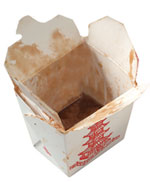
Shiny and dirty: garbage
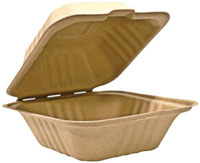
Not shiny, and clean: recycle
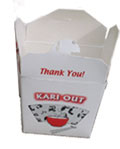
Shiny and clean: recycle
Coffee cups (including Starbucks)
Technically, Starbucks paper and plastic cups, as well as lids, are recyclable, but signage in some Starbucks locations directs customers to throw them in the garbage. (We can only assume this is because Starbucks locations don’t have areas to empty and rinse cups; Starbucks didn’t return calls.) But outside Starbucks stores, you can ignore their signage.

Clean paper cups (and sleeves): recycle
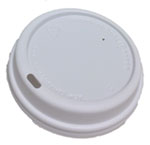
Clean lids: recycle
Other takeout items
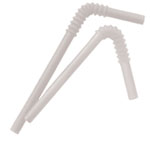
Straws: garbage
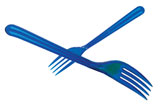
Plastic utensils: garbage
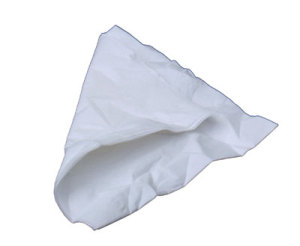
Napkins: compost
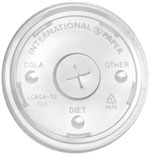
Plastic lids (3 inches wide): recycle

Paper cups: recycle
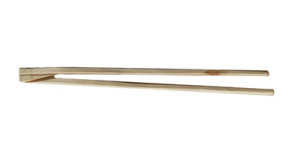
Disposable chopsticks: compost

Chip bags: garbage
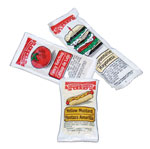
Condiment packets: garbage

Condiment tubs: garbage
Household items

Aluminum foil, clean: recycle
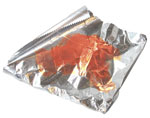
Aluminum foil, dirty: garbage
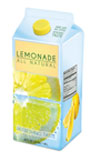
Cartons with plastic spouts: recycle

Metal lids, 3 inches: recycle

Credit cards: garbage

Plastic bags: garbage

Bottles for cleaning chemicals: recycle

Bottles for hazardous chemicals: garbage

Bottle caps: garbage

Light bulbs: garbage

Packing peanuts: garbage

Orange pill bottles: garbage

Corks: garbage
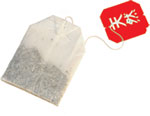
Tea bags: compost
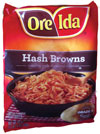
Plastic food bags: garbage
Other items you asked about:
- Cake frosting bags: garbage (or reuse)
- Produce bags: garbage (or reuse)
- Produce stickers: garbage
- Dryer sheets: garbage
- Diapers: garbage
- Shredded paper: compost (can be recycled if in long strips, not cross cut, and in a bag)
- Paper towels covered with cleaners or hazardous chemicals: garbage
- Hearing aid batteries: garbage (or bring to recycling location)
Special thanks to city employees Brett Stav, Marcia Rutan, Pat Kaufman, Amy Ryan, Tim Croll, and John Caputo for their help on this project.